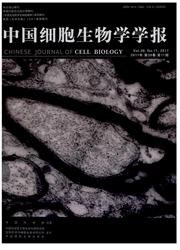

 中文摘要:
中文摘要:
胚胎干细胞(embryonic stem cells,ESCs)是来源于早期胚胎的全能性细胞,在合适条件下具有分化为任何一类成体细胞的潜力。在小鼠中,根据细胞来源的胚胎发育时间,ESCs可以被分为原始态多能性(nalive pluripotency)和始发态多能性(primed pluripotency)两种状态。这两种状态的细胞在发育上相互联系,具有不同的形态、信号依赖、发育性质、基因表达及表观遗传学性质,并且在特定的条件下可以相互转化。人类胚胎干细胞(human embryonic stem cells,hESCs)的发育潜能曾一度被认为低于小鼠胚胎干细胞(mouse embryonic stem cells,mESCs),直到人类原始态胚胎干细胞的发现证明了hESCs可以表现出与mEscs相似的性质。这对于人类胚胎发育的研究及ESCs在临床治疗上的实际应用都具有重要的意义。
 英文摘要:
英文摘要:
Embryonic stem cells (ESCs) are pluripotent cells obtained from embryos during early development. Mouse embryonic stem cells (mESCs) can be defined into naive and primed pluripotent cells depending on the distinct phases of embryonic development from which they were derived. Those cells show different colony morphology, pluripotency, culture conditions for self-renewal, gene expression and epigenetic features. And the two cell types can be interconverted into each other under specific conditions. As human embryonic stem cells (hESCs) are more akin to primed mESCs than to the naive mESCs, they are thought to be derived from later stage of development compared to mESCs. However, this view is being challenged since na'fve pluripotent hESCs identification. The establishing and characterizing of na'fve hESCs is essential for both developmental mechanism research and clinical application studying. Here we review recent advances in generation and identification of multiple pluripotent ESCs.
 同期刊论文项目
同期刊论文项目
 同项目期刊论文
同项目期刊论文
 Fibroblast activation protein regulates tumor-associated fibroblasts and epithelial ovarian cancer c
Fibroblast activation protein regulates tumor-associated fibroblasts and epithelial ovarian cancer c Over-expression of fibroblast activation protein alpha increases tumor growth in xenografts of ovari
Over-expression of fibroblast activation protein alpha increases tumor growth in xenografts of ovari KLF5 strengthens drug resistance of ovarian cancer stem-like cells by regulating survivin expression
KLF5 strengthens drug resistance of ovarian cancer stem-like cells by regulating survivin expression Enrichment of ovarian cancer stem-like cells is associated with epithelial to mesenchymal transition
Enrichment of ovarian cancer stem-like cells is associated with epithelial to mesenchymal transition 期刊信息
期刊信息
